Reconstruction of osteomyelitis defects of the craniofacial skeleton
- PMID: 20567734
- PMCID: PMC2884900
- DOI: 10.1055/s-0029-1214164
Reconstruction of osteomyelitis defects of the craniofacial skeleton
Abstract
Osteomyelitis of the craniofacial skeleton closely resembles osteomyelitis elsewhere in the body in its pathophysiology and medical management; subsequent reconstruction after debridement remains distinctly challenging. The goals of reconstruction must include the restoration of the complex and readily visible morphology of the cranium and face, as well as the adequate return of vital sensory, expressive, and digestive functions. In this article, the various reconstructive modalities will be discussed including pedicled and nonpedicled flaps with or without an osseous component, nonvascularized bone grafts, alloplastic implants, and bone regeneration using protein therapy. Although reconstruction of craniofacial defects after osteomyelitis commonly proves formidable, the satisfactory return of form and function remains a plausible reconstructive goal.
Keywords: Osteomyelitis; craniofacial; head and neck; mandible; midface; reconstruction; skull.
Figures
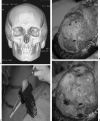
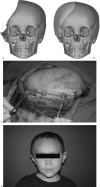

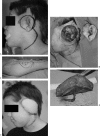

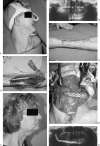
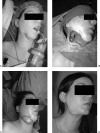
Similar articles
-
Revascularized bone grafts for craniofacial reconstruction.Otolaryngol Clin North Am. 1994 Oct;27(5):955-82. Otolaryngol Clin North Am. 1994. PMID: 7816440 Review.
-
Reconstruction of complex cranial and craniofacial defects utilizing iliac crest-internal oblique microsurgical free flap.Microsurgery. 1988;9(2):154-8. doi: 10.1002/micr.1920090218. Microsurgery. 1988. PMID: 3173082
-
Pedicled osseous flaps.Otolaryngol Clin North Am. 1994 Oct;27(5):927-54. Otolaryngol Clin North Am. 1994. PMID: 7816439 Review.
-
Challenges in Microsurgical Reconstruction for Craniofacial Osteomyelitis With Resultant Osteonecrosis.J Craniofac Surg. 2019 Oct;30(7):1960-1965. doi: 10.1097/SCS.0000000000005594. J Craniofac Surg. 2019. PMID: 31232982
-
Osteomyelitis of the craniofacial skeleton.Semin Plast Surg. 2009 May;23(2):73-9. doi: 10.1055/s-0029-1214159. Semin Plast Surg. 2009. PMID: 20567729 Free PMC article.
Cited by
-
Craniofacial Bone Tissue Engineering: Current Approaches and Potential Therapy.Cells. 2021 Nov 3;10(11):2993. doi: 10.3390/cells10112993. Cells. 2021. PMID: 34831216 Free PMC article. Review.
-
PLLA Coating of Lyophilized Human Bone Allograft for Long-term Release of Antibiotics.In Vivo. 2025 Jul-Aug;39(4):1879-1890. doi: 10.21873/invivo.13987. In Vivo. 2025. PMID: 40578975 Free PMC article.
-
Case Report: Reconstruction of a Large Maxillary Defect With an Engineered, Vascularized, Prefabricated Bone Graft.Front Oncol. 2021 Dec 6;11:775136. doi: 10.3389/fonc.2021.775136. eCollection 2021. Front Oncol. 2021. PMID: 34938659 Free PMC article.
References
-
- Nelaton A. Elements De Pathologie Chirurgicale. Paris, France: Germer-Bailliere; pp. 1844–1859.
-
- David D J, Cooter R D. Craniofacial infection in 10 years of transcranial surgery. Plast Reconstr Surg. 1987;80:213–225. - PubMed
-
- Fearon J A, Yu J, Bartlett S P, Munro I R, Chir B, Whitaker L. Infections in craniofacial surgery: a combined report of 567 procedures from two centers. Plast Reconstr Surg. 1997;100:862–868. - PubMed
-
- Barker F G., II Efficacy of prophylactic antibiotics for craniotomy: a meta-analysis. Neurosurgery. 1994;35:484–490. discussion 491–482. - PubMed
-
- Verbon A, Husni R N, Gordon S M, Lavertu P, Keys T F. Pott's puffy tumor due to Haemophilus influenzae: case report and review. Clin Infect Dis. 1996;23:1305–1307. - PubMed

